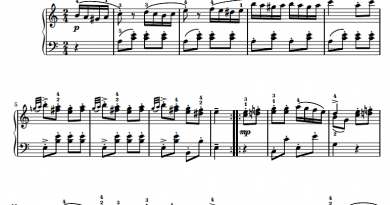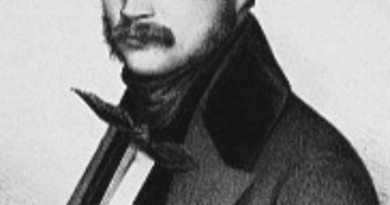How to position your body on the piano
The pupil should be seated opposite the middle of the keyboard, far enough from it to allow the upper and lower arm to form an obtuse angle, also to enable the right to reach the upper and the left hand the lower keys, without moving the body. The piano-stool should be so adjusted, that the arm form a straight line from the elbow to the middle finger joints.
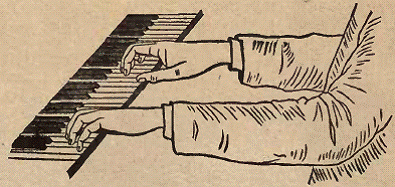
The elbows should be kept near the body. Footrest must be provided for children.
The hand should assume an easy position; the back should neither bend inward or outward. The keys should be touched with the fleshy part of the fingers and not with the nails. The thumb must not be allowed to hang down, but ought to be given a place on the keyboard by the side of the other fingers. When about ready to play the first exercises, place the hand over the keys, so that each of the fingers rests over the key it is to strike. From the natural position of the hand it will be seen, that the second finger stands somewhat further in upon the key board than the others, yet in no case should it reach in between the black keys. The following cut illustrates the position of the several fingers upon the keyboard:
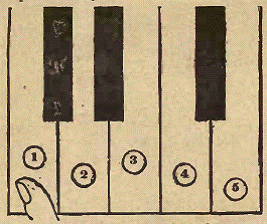
The touch on the piano
The keys should be struck by raising the fingers from the knuckle joint. The teacher should be careful to see to it, that the student does not strike the keys by raising the arms or wrists. To strike from the knuckle joints the normal touch of the piano, the basis of all others, and for this reason its operation as well as its importance should be made plain to the pupil. The pupil should use none other in the first lessons. Owing to the carelessness of young students, this lesson is often overlooked, and thus they acquire a false touch while practicing by themselves. The teacher is therefore often forced to undo what has been done badly between lessons, losing time and causing much annoyance to himself as well as his pupil. For this reason we recommend shorter but more frequent lessons, also that some grown person watch over the pupil while practicing.
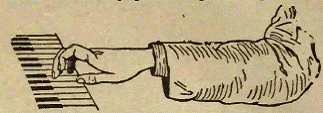
When about to strike a key, raise the finger without moving the hand, without contracting or extending the fingers; then strike rapidly and with sufficient force to produce a good tone. Move the finger from the key as soon as the next finger strikes, thus allowing only one tone to sound at a time. There should be no interval of rest between the two tones, unless there be a rest in the music. When striking a black key, the fingers of course must reach forward, hence the hand is compelled to move somewhat, yet its position should not materially vary.
Avoid all unnecessary motion of head or hands as well as all contortions of face.
Position on the piano : the wrist action
The following cut represents the position of the hand when striking the keys with the wrist-action. The wrist alone should move, the arm should remain perfectly still.
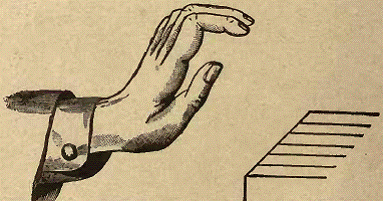
While the pupil may during the playing of the following exercises look at his hands in order to notice whether they are in the right position, he should not look at them for the purpose of hunting the keys. He should as much as possible endeavor to find them by the feel of his fingers.

